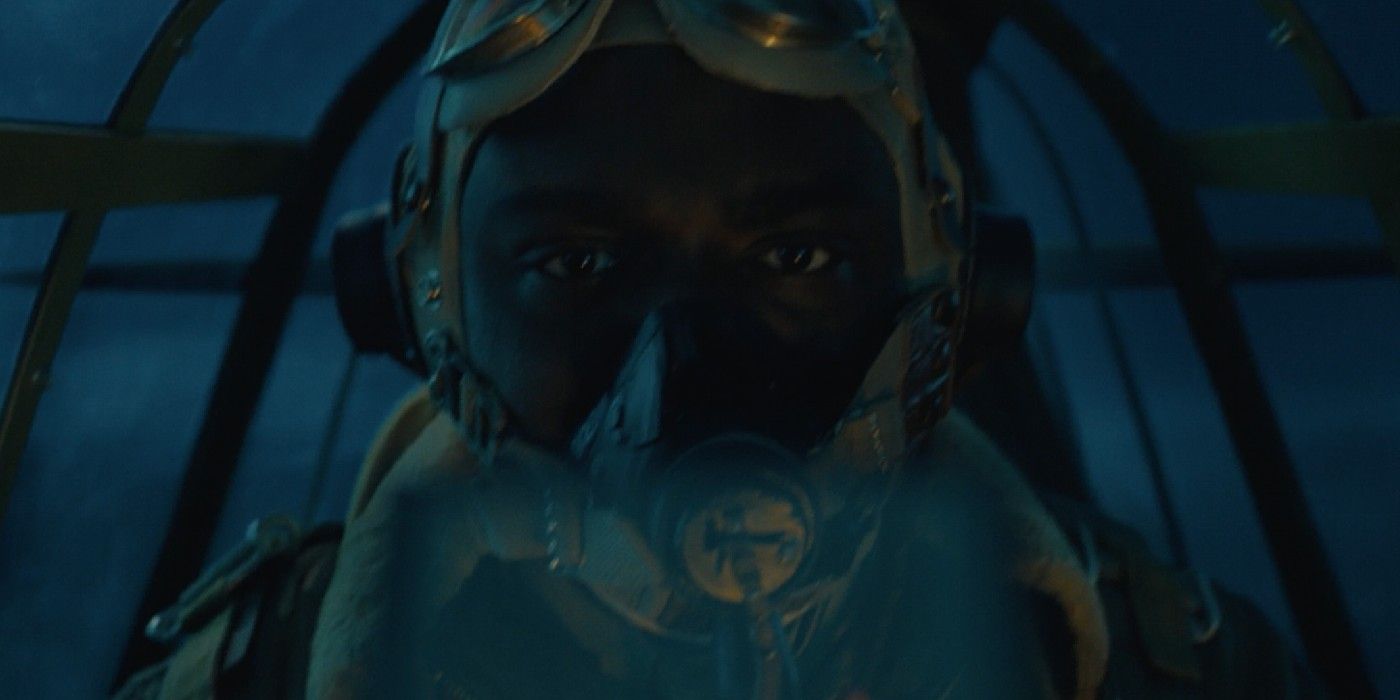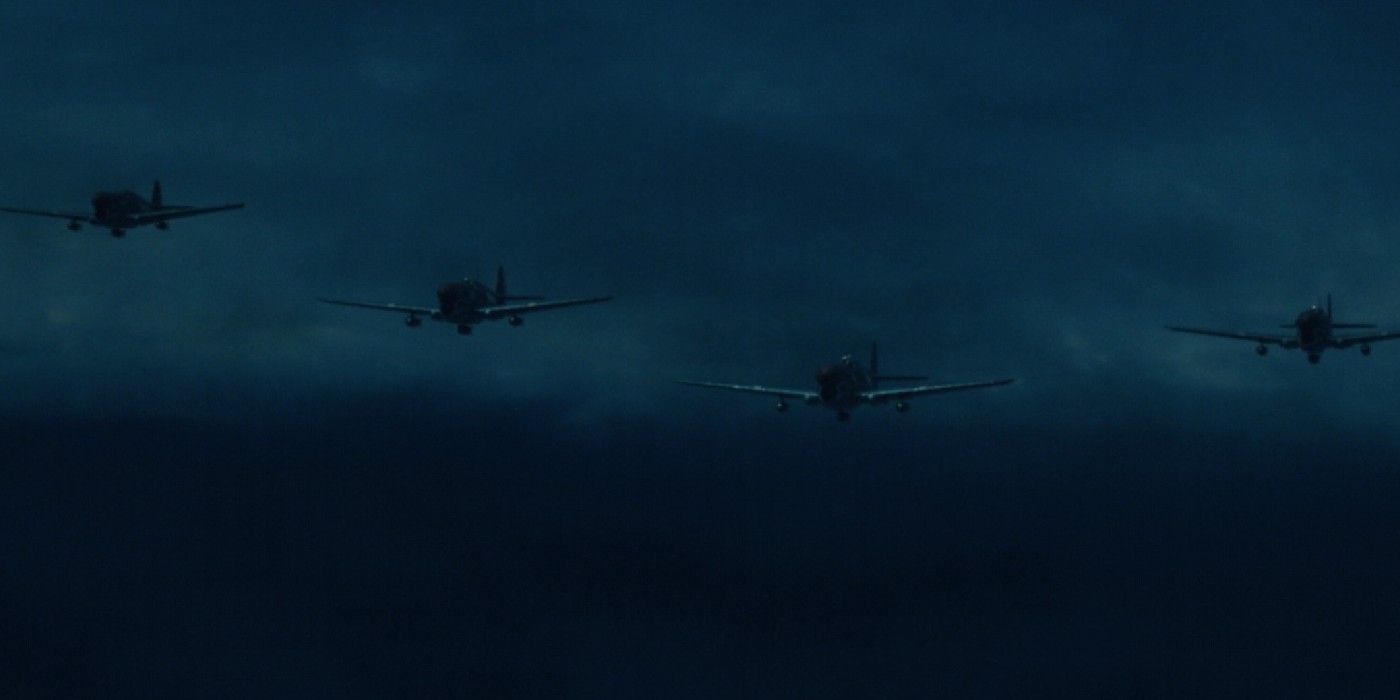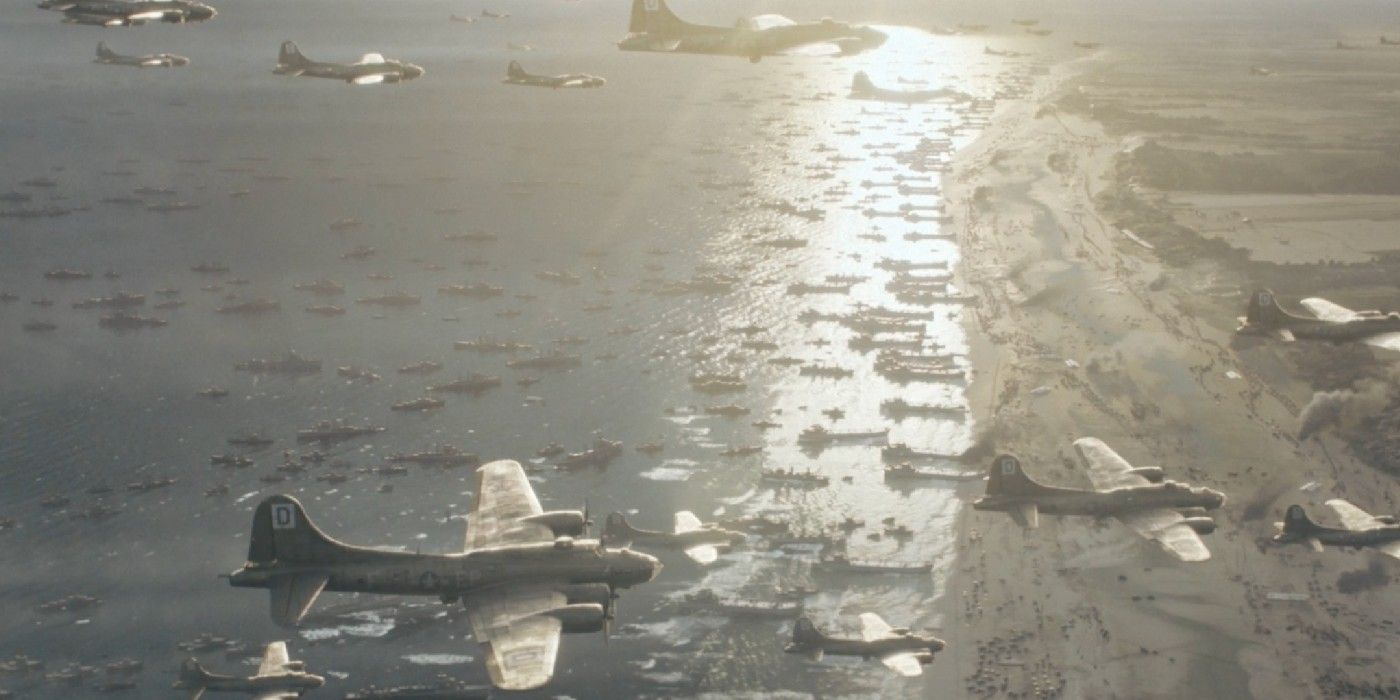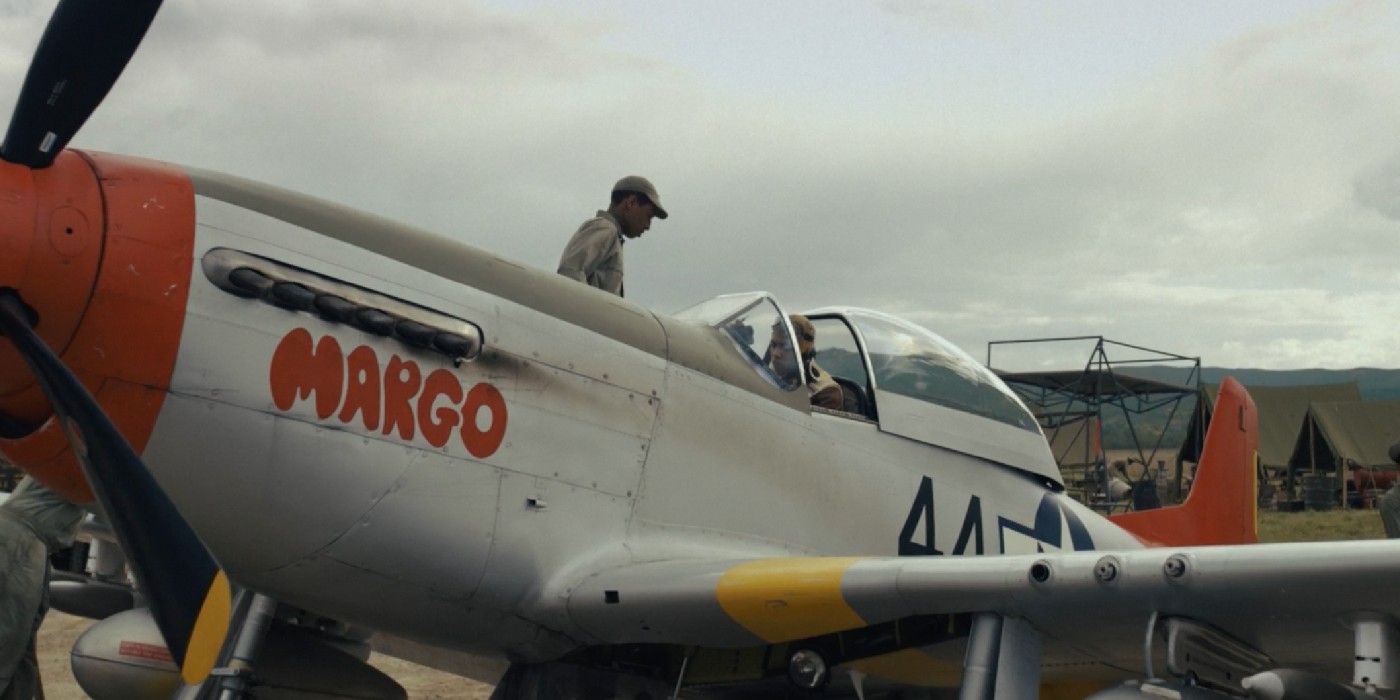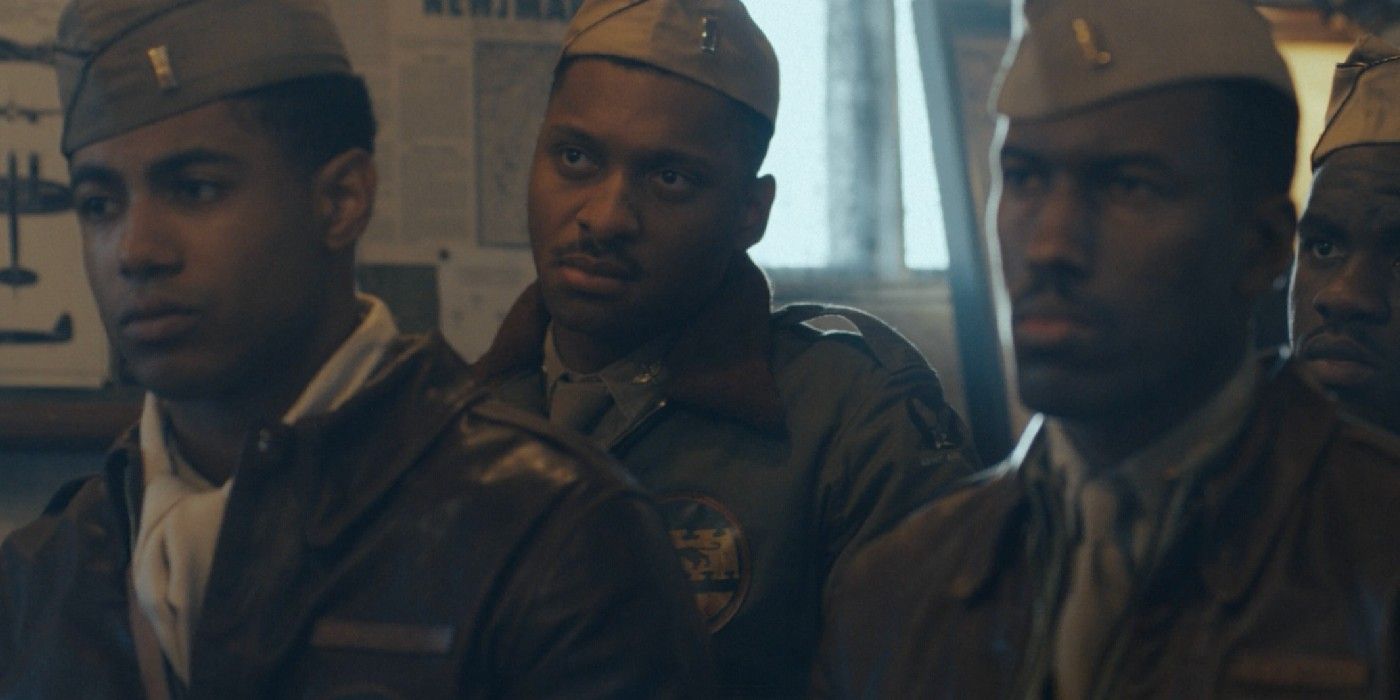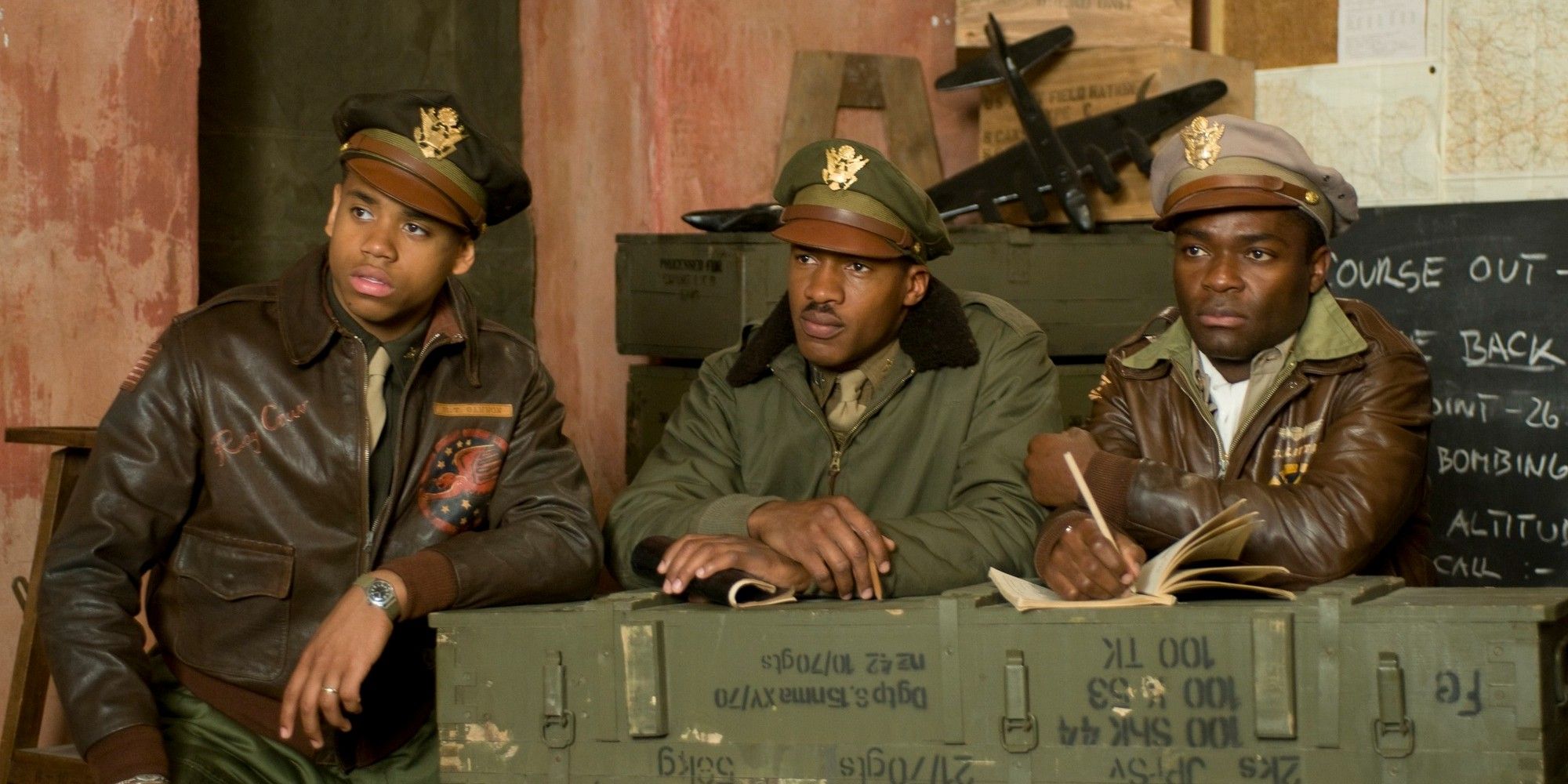[ad_1]
This article contains spoilers for Masters of the Air episode 8.
Summary
- The Tuskegee Airmen were the first Black pilots in U.S. history, breaking barriers and showing immense bravery during WWII.
- Their formation was a victory for civil rights activists, leading to their impressive track record and historic achievements.
- Despite facing racism post-WWII, the Tuskegee Airmen continued to be sought after for their expertise and contribution to Air Force technology.
During the years of World War II, from 1939 to 1945, many incredible stories arose about the heroic efforts made to fight against the Axis powers, and one particular tale that has gone down in history and is documented in Masters of the Air is the efforts of the Tuskegee Airmen. The Tuskegee Airmen were an all-Black segment of the U.S. Army Air Forces. They made up the 332nd Fighter Group and the 477th Bombardment Group. The unit was well-known for their impressive track record during the war, and as a result, they won various medals for their service.
The Tuskegee Airmen have made their name in the history books for two reasons. First and foremost, their mere existence was a major accomplishment for the United States military. According to The National World War II Museum, there was no such thing as a Black pilot before the Tuskegee Airmen. The Jim Crow laws overwhelming the United States prevented any Black individual from rising to any rank beyond a regular soldier. More than that though, the Tuskegee Airmen stood out because of their immense bravery and service. They changed history, but were also amazing at their jobs.
1:57
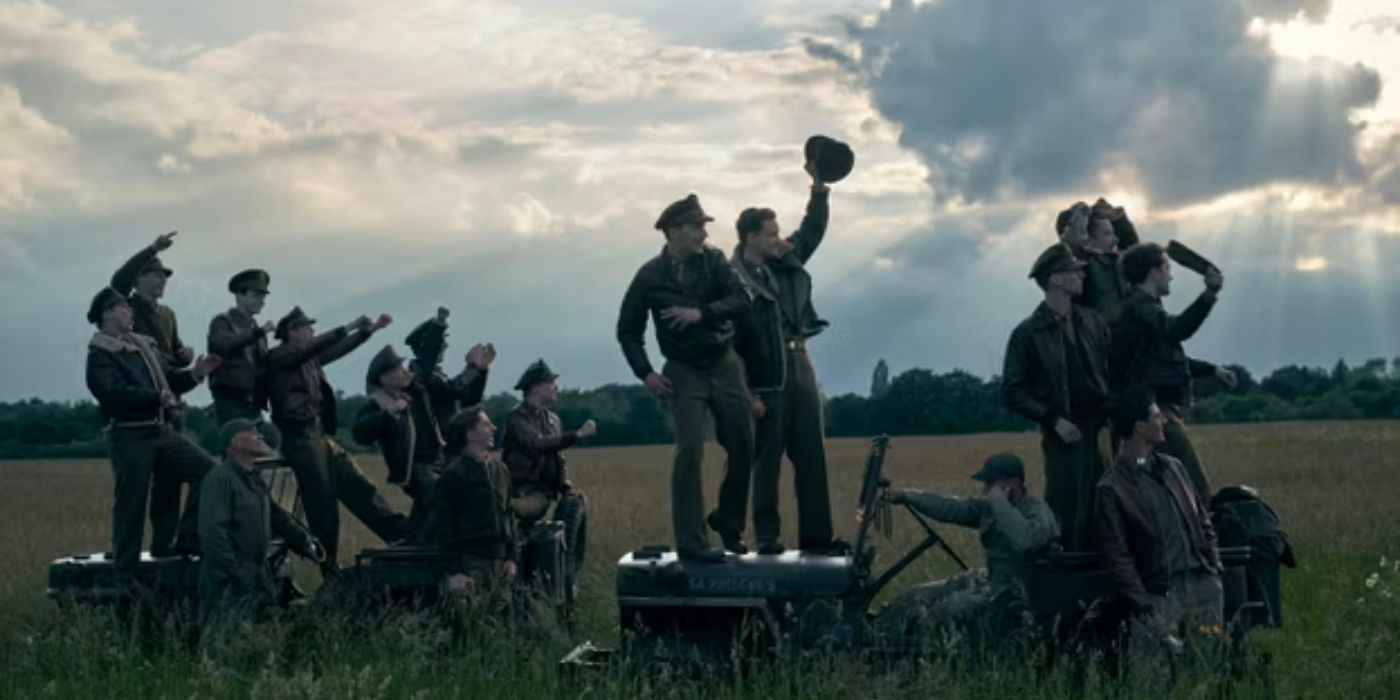
Masters Of The Air Episode 8 Will Finally Deliver One Thing I’ve Been Waiting For All Season
Masters of the Air promised many things before it released on Apple TV+, and now, episode 8 will finally deliver what many have been waiting for.
The Tuskegee Airmen’s Origins
After Black recruits were denied the ability to become pilots during World War I, Black activists fought especially hard for their right to take to the air in the next war. Due to the hard work of these civil rights activists, Appropriations Bill Public Law 18 was passed by Congress in April 1939, allowing the allocation of funds for training Black pilots. Then, as the war came to the U.S. in 1941, many Black soldiers took the opportunity to become pilots.
With so many numbers, the U.S. Army Air Forces created the all-Black 99th Pursuit Squadron.
The formation of the Tuskegee Airmen began via the Civilian Pilot Training Program at Tuskegee University. This program allowed countless Black men to train as pilots, making them so qualified that the U.S. military could not refuse them. Along with that, a number of tests were conducted on the men so that the Airmen ended up being the brightest and most physically fit candidates available. Following rigorous training in Tuskegee, Alabama, the 99th Squadron went over seas in April 1943, while the 332nd Fighter Group joined them in February 1944. These were the two units active during the war.
Are Masters Of The Air’s Tuskegee Airmen Real Life Pilots?
Like the majority of the Masters of the Air cast, the Tuskegee Airmen introduced in episode eight represent the real pilots of the real Tuskegee Airmen. The three primary characters presented in the episode are Second Lieutenant Alexander Jefferson, Second Lieutenant Robert Daniels, and Captain Richard Macon. All three of these men existed in real life and served as Tuskegee Airmen during World War II. As episode eight suggests, all three were shot down during a flight to France, and after reuniting in German custody, were escorted to Stalag Luft III, where members of the 100th were still being held.
Alexander Jefferson, Robert Daniels, and Richard Macon are played by Branden Cook, Ncuti Gatwa, and Josiah Cross respectively.
How The Tuskegee Airmen Completed Over 500 Missions In World War 2
In Masters of the Air, the Tuskegee Airmen come upon their 500th mission. Considering that the 332nd Fighter Group arrived in Europe only four months prior, this number is quite impressive. However, one aspect of this was the types of missions the Airmen flew. Unlike the 100th Bomb Group, the Tuskegee Airmen weren’t flying over active parts of Europe where death was imminent. Really, it wasn’t until June 1944 that the squadron saw more dangerous missions over France.
This explains how the Tuskegee Airmen could achieve 500 flights, but the men of the 100th Bomb Group struggled to survive 25 missions. Where the 100th were being sent on various consecutive missions over Germany where being shot down was almost an inevitability, the Tuskegee Airmen focused their efforts on less dangerous zones like Italy, where survival was more than possible. Both squadrons were doing important work for the war effort, however, they certainly saw a vastly different style of war.
The Tuskegee Airmen’s Role In D-Day
In Masters of the Air episode 8, the 100th Bomb Group participates in the invasion of Europe, otherwise known as D-Day. At that time, in June 1944, the Tuskegee Airmen did not join the forces of D-Day, however, that was an important month for the squadron. While the 100th bombed German transportation lines such as bridges and roads, the Tuskegee Airmen were finally being sent out on heavy bomber escort missions. Where they had previously participated in smaller, less dangerous flights in Italy, the men were now getting the chance to fly over active territory such as France and Germany.
Why The Tuskegee Airmen Were Called Red Tails
Another detail that distinguished the Tuskegee Airmen was their nickname, the “Red Tails.” Unlike the 100th’s grim moniker, the “Bloody Hundredth,” the “Red Tails” was a playful name that referred to how the Tuskegee Airmen painted the tails of their P-47 planes red. The noses of their P-51 Mustang planes were red as well. Though this coloring may have seemed dangerous, as it could have made their planes stick out to enemies, the red detailing on the Tuskegee Airmen’s planes set them apart from other air squadrons, similar to how Band of Brothers’ Easy Company had spades on their helmets.
What Happened to The Tuskegee Airmen After WW2
Upon returning home from the war, the Tuskegee Airmen did not receive the same happy welcome and pride that other airmen saw in the United States postwar. Despite their impressive record and important service, the Airmen still faced intense racism in America. However, the Tuskegee Airmen still remained important to the U.S. military. When segregation was eradicated from the military in 1948, the Airmen were highly sought after for their skills. They helped train the next generation of pilots, and also, were integral to developing Air Force technology. Over the years, the Tuskegee Airmen continued to share their expertise.
What To Watch If You Want To Know More About The Tuskegee Airmen
Though Masters of the Air gives a brief look at the Tuskegee Airmen, there are other films that delve deeper into the iconic World War II group. The Tuskegee Airmen is a 1995 movie created starring Laurence Fishburn that is available to stream on Max. The 2012 film, Red Tails, is currently streaming on Disney+. And for a more academic view, there is the documentary entitled Double Victory: The Tuskegee Airmen at War. Either way, the Tuskegee Airmen are certainly worth learning about, and their cameo in Masters of the Air is a great addition to the 100th’s story.
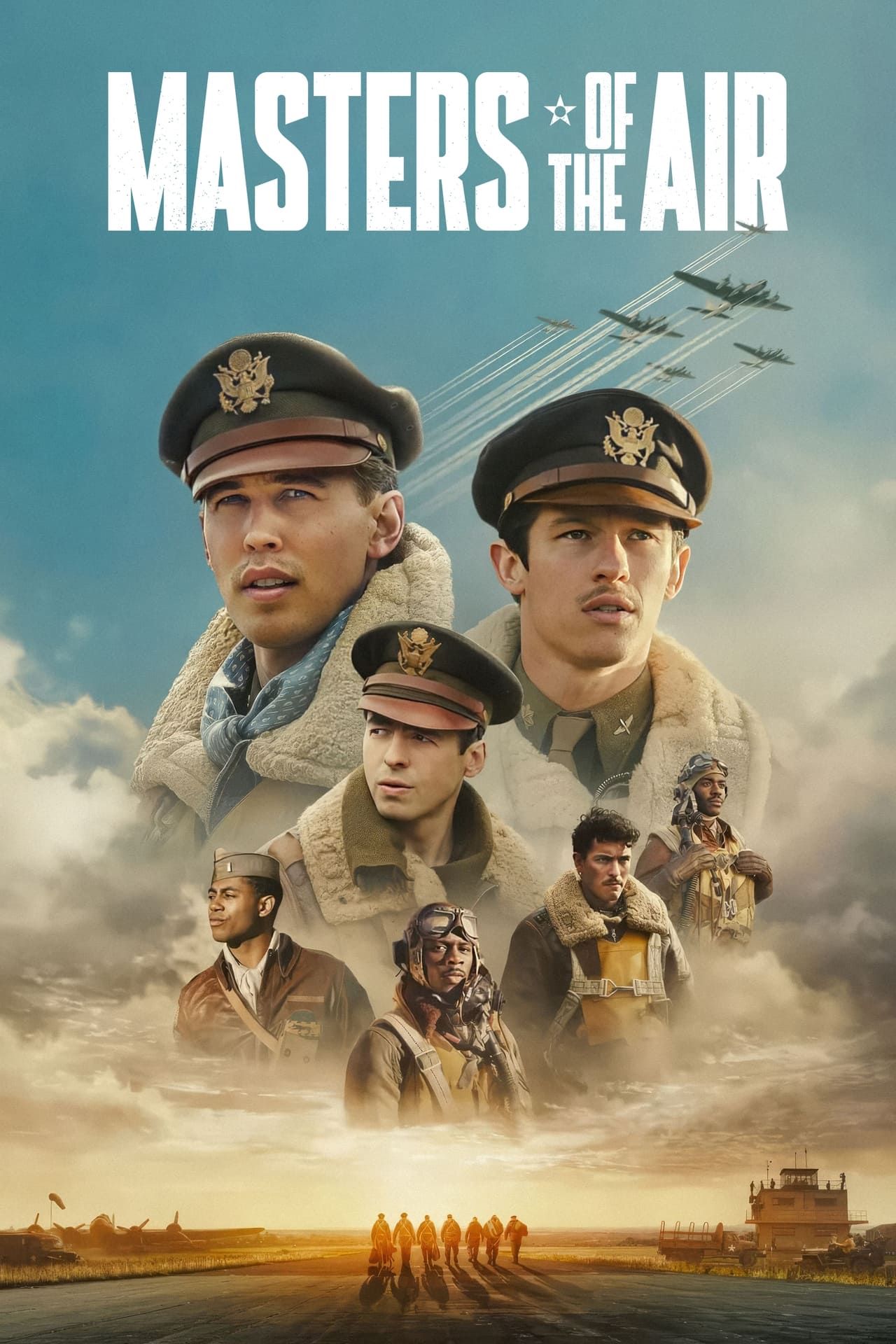
Masters of the Air
- Cast
- Austin Butler , Callum Turner , Barry Keoghan , Nikolai Kinski , Stephen Campbell Moore , Sawyer Spielberg , Isabel May , Anthony Boyle
- Release Date
- January 26, 2024
- Seasons
- 1
- Writers
- John Shiban , John Orloff
- Directors
- Cary Joji Fukunaga , Dee Rees , Anna Boden , Ryan Fleck , Timothy Van Patten
- Where To Watch
- Apple TV+
[ad_2]
Source link


